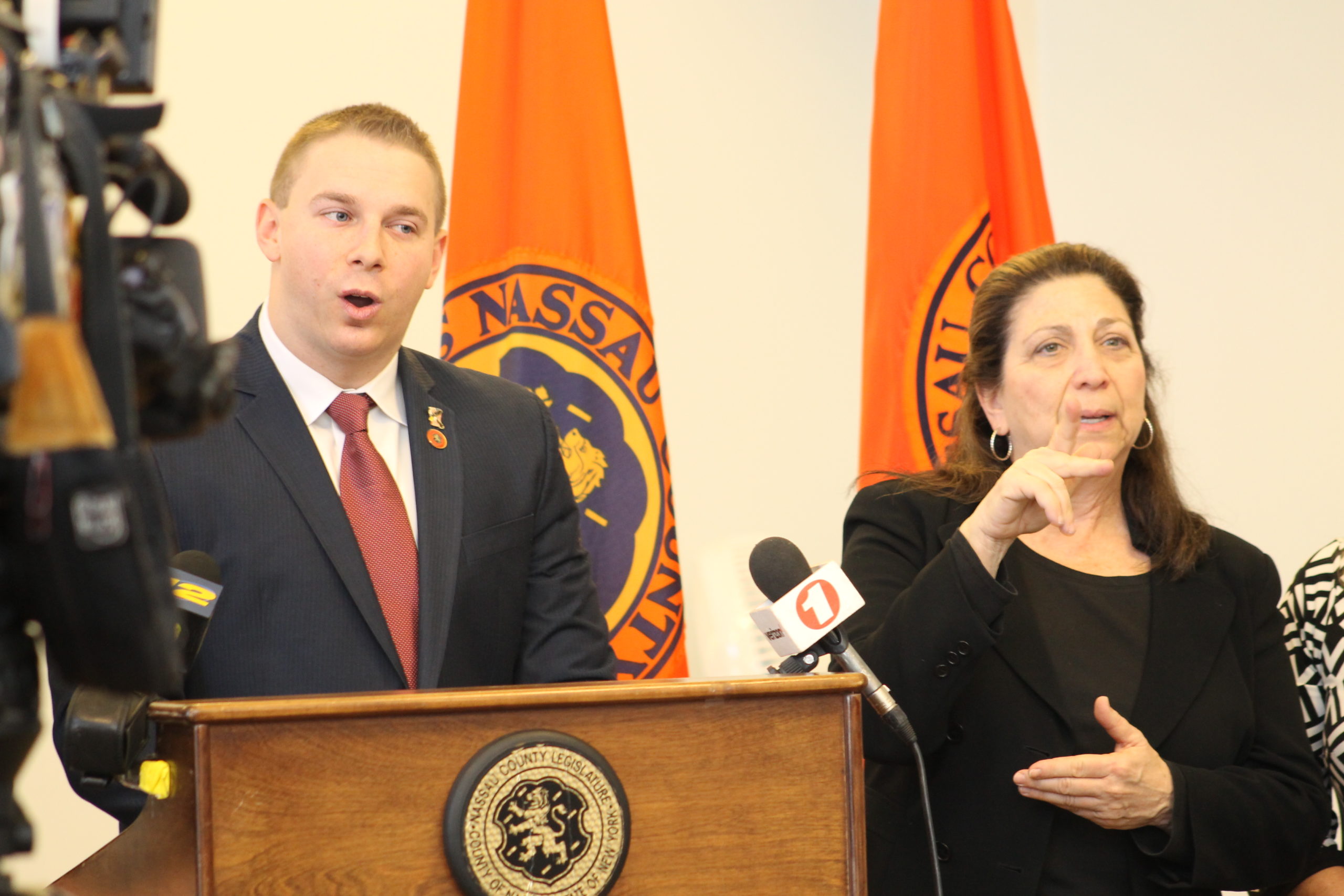Nassau County Legislator Joshua Lafazan (D-Syosset) focused his attention on the deaf and hard of hearing in the first he filed in his new position.
Alongside fellow legislators Siela Bynoe (D-Westbury), Ellen Birnbaum (D-Great Neck), Arnold Drucker (D-Plainview) and Debra Mule (D-Freeport), Lafazan called for a certified American Sign Language interpreter to be present at all emergency situation news conferences in Nassau County.
“According to the National Association for the Deaf, it has been well documented that this population frequently experiences the most difficulty preparing for and recovering from emergencies and disasters,” Lafazan said. “Among the many difficulties faced by the deaf and hard of hearing during times of emergency is the inability to receive potentially life-saving information from government agencies responsible for emergency management.”
Approximately 48 million Americans are either deaf or hard of hearing, and Mill Neck School for the Deaf Executive Director Loretta Murray said about 10 percent of the Nassau County population of about 1.36 million suffered from similar hearing disabilities.
If approved, the law would initiate steps through the county’s Office of Emergency Management to provide communication to those who are deaf or hard of hearing, including placing the interpreter so that his or her face, body, arms and hands are visible throughout the news conference and video transmissions for emergency situation news conferences for natural and manmade disasters.
Though the bill only applies to emergency news conferences, Lafazan said this was the first step for Nassau County to integrate American Sign Language interpreters into the legislative process, a trend he said he hopes will continue into Suffolk County and across New York.
Title IV of the Americans with Disabilities Act of 1990 mandates a nationwide system of telecommunications relay services to make public services, including telephone systems, hospitals, law firms, retail stores and hotels, available for those with hearing struggles.
“It’s 28 years later, and it’s still not in place,” Murray said. “During Hurricane Sandy, many of our people were texting us and saying, ‘What do I do? Do I stay? Do I leave?’ How do I know what to tell them, because I’m not an emergency service provider. These are the people who knew enough to reach out to us, but many people didn’t. We found out later that people were trapped in their homes for two weeks.”
Murray said while some residents who are deaf or hard of hearing will use closed captions on televisions, about 10 percent of that population relies solely on American Sign Language.
Before the news conference, the room was filled with Mill Neck School students, Murray said, who were signing back and forth to each other, filling the silent room with conversations.
“If this proposed law passes, Nassau County’s deaf residents will finally obtain equal access to emergency information,” Murray said. “As the frequency of natural and manmade disasters increases, providing immediate access to information will assist in keeping our residents safe.”



